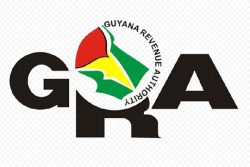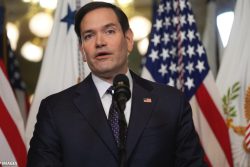Dear Editor,
Does Vishnu Bisram really believe what he writes? (‘The fact that he failed does not mean Cheddi Jagan was not transformational,’ SN, January 28.) Transformational leadership in an ethnically divided country like Guyana means leadership that could transcend the ethnic divide, generate reconciliation and put both reconciled groups on a path to economic independence and virility. Cheddi Jagan was not a transformational leader. He did not even transform the single ethnic group he had undivided support from − Indians. His efforts to transform Indians into communists failed. While Indians supported the PPP and Cheddi Jagan, it was out of racial politics and not ideology. Indians remained a commercial and capitalist ethnic group. In fact, Burnham succeeded more on the ideological front than Jagan, as more Africans embraced Burnham’s socialism than Indians supported Jagan’s communism.
Truth be told, if Jagan had won the 1964 election, Indians would have fled from Guyana no less under a communist PPP government than they did under a socialist PNC government. The proof is in the fact that Indians have continued to run from Guyana in significant numbers despite the PPP’s free market economy since 1992. Cheddi Jagan was a staunch ideologue whose dogged pursuit of communism with his head in the clouds created divisions in Guyana and cost him politically. What is transformational about a man who wanted to impose a foreign ideology on an obviously commercialized and capitalist ethnic group, Indians, who have never philosophically or ideologically embraced the very ideals communism stood for? Cheddi Jagan mistook racial support from Indians for ideological support.
Cheddi Jagan’s finest qualities were as a decent human being. Unfortunately, he did nothing to impose those qualities on those whom he led or on the party he formed. Jagan did not insist on and did not enforce integrity within the PPP. Nor was the PPP a force for internal democracy, decency and quality leadership. This is why the PPP is the corrupt, dictatorial entity it is today. Cheddi Jagan did not transform the PPP. Cheddi Jagan was not transformational by any stretch of the imagination. He was not a populist. He did not, like Obama, emerge onto the scene and immediately the nation swooned.
Jagan’s early political career was unspectacular. He slaved in the trenches for many years. He tried to build on the trade union struggles by adding a national political component to this existing movement. Jagan’s early political endeavours were primarily focused on the plight of the sugar workers and this Indian-centrism shaped and pigeonholed him in many ways for the rest of his political life. This defined Cheddi early in a racially divided country that was always ready to define. Cheddi’s path to power was laboured, not inspirational or transformational. His PAC, the forerunner of the PPP, won one out of four contested seats in the 1947 election. Jagan won just 31% of the votes in that district. The racially united PPP won 18 of 24 seats in the 1953 elections but closer examination showed the PPP won 51% of the 75% that voted. A full 25% stayed home in a country that was roughly 87% African and Indian. The evidence from 1947 to Cheddi’s death revealed he was only able to capture the Indian vote. He never appealed to African voters en masse even before Burnham arrived, and he held sway only over a small minority of Amerindian and Mixed Race voters.
Any examination of the decision-making of Cheddi Jagan reveals how much political opportunism, naïvete and a foolish reliance on ideology intellectually crippled him. Cheddi Jagan gave Burnham his ticket to power in the same fashion Janet Jagan gave Jagdeo his ticket to power. Jagan saw the silver-tongued Burnham as his opportunity to secure the African vote in order to gain power to create his communist state. Janet Jagan saw Bharrat Jagdeo as the communist economist who would maintain a communist economic path. Burnham had just returned as a student with no experience and was given the chairmanship of the most powerful political entity in Guyana − the PPP. Bharrat Jagdeo had served as finance minister for a handful of years and had no political testing from the masses when Janet Jagan handed him the presidency. What Cheddi and Janet failed to see were the inherent character flaws in these men and how they would destroy Guyana. The Jagans tried to use people for their ideological aggrandizement and in their haste to do so they clearly missed the warning signs. In many ways, these shallow thinkers enabled their own political destruction and the eventual consignment of the party they created to the dustbin. The political movement Jagan created has produced two vehement race parties that are internally dictatorial and inherently doomed to produce failed national governments.
A transformational leader usually has an immediate transformational effect on the political landscape or develops sustained qualities that transform the country. Cheddi Jagan had tacit and unspoken racial support before the split in the PPP and then openly courted race thereafter. Walter Rodney was transformational in message as he pilloried the racial appeals of the PPP and PNC and openly called for multiracial unity. However, Rodney was not transformational in practice because he did not command the support of a multi-ethnic majority of the populace to be considered transformational.
Guyana has never produced a transformational leader. Cheddi Jagan’s failures were because he was not transformational. He failed to transform himself and his message even when he knew the West would never allow him power in 1964. He was an unyielding communist to the end and even the racial support of an innately capitalist people did not protect him from the political wilderness. Peter D’Aguiar was the better economic choice for Indians and Africans alike, but race like it always has, always gets the last laugh in Guyana.
Yours faithfully,
M Maxwell








